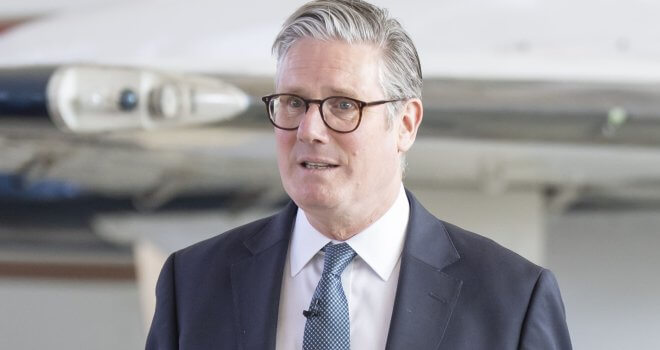The Many Hats Modern Business Leaders Wear

In the dynamic arena of modern business, leaders are often required to wear a number of different hats, each representing a critical facet of effective leadership. This multifaceted nature of their roles is not just a testament to their versatility but a necessary adaptation to the ever-evolving corporate landscape. So, let’s look into some of the roles modern leaders have to assume to be successful.
Visionary Architect: Crafting Tomorrow’s Blueprint
In the realm of modern business leadership, the role of the Visionary Architect is absolutely key. This is not just a title; it’s a responsibility that encompasses the art of seeing beyond the immediate horizon, of seeing what could be opposed to the current what is. As Visionary Architects, leaders are tasked with crafting the blueprint of their organisation’s future. This involves an intricate balance of foresight, innovation, and strategic planning.
These leaders are not just focused on short-term gains or reactive strategies. They dive into the depths of market trends, emerging technologies, and evolving consumer behaviours, extracting insights that shape their long-term vision. It’s about understanding that today’s cutting-edge idea is tomorrow’s standard practice. They ask the probing questions: Where will our industry be in the next decade? How do we not just adapt to change but lead it?
Their role also involves inspiring and rallying their teams around this vision. It’s one thing to see the future; it’s another to bring people along on the journey. This requires a blend of charisma, clarity, and conviction. The Visionary Architect must articulate their vision in a way that resonates with diverse stakeholders, turning abstract concepts into a coherent and compelling narrative.
Emotional Intelligence Ambassador: The Heart Of Leadership
The role of the Emotional Intelligence Ambassador in modern business is more critical than ever. In a corporate world that is increasingly automated and data-driven, the human element remains irreplaceable, and this is where emotional intelligence (EI) becomes a vital leadership skill. Leaders in this role are gifted at understanding and managing their own emotions, as well as recognizing and influencing the emotions of others.
This skill set goes beyond mere empathy. It involves actively listening to team members, acknowledging their concerns, and providing support. It’s about creating an environment where employees feel valued and understood. This aspect of leadership fosters a culture of trust and respect, which are essential for team cohesion
and productivity. Emotional Intelligence Ambassadors are able to navigate the complexities of interpersonal dynamics, turning potential conflicts into opportunities for collaboration and growth.
This role is integral in driving employee engagement and retention. Leaders who demonstrate high emotional intelligence can better connect with their employees, understand their motivations, and help them find purpose in their work. They recognize the unique strengths and challenges of each team member, providing tailored guidance and support. This not only boosts morale but also encourages a sense of belonging and loyalty within the team.
In dealing with change, whether it’s organisational restructuring or adapting to new market realities, the Emotional Intelligence Ambassador’s role becomes even more pronounced. They are the ones who can effectively manage the emotional landscape of their team, ensuring that transitions are handled with sensitivity and understanding. They mitigate the resistance that often accompanies change by addressing fears and uncertainties and by involving team members in the change process.
Crisis Navigator: Steering Through Storms
Leaders who excel in this role possess a unique combination of qualities: resilience, strategic thinking, and a calm demeanour. They are the captains steering their corporate ships through rough waters, be it a market downturn, a public relations crisis, or an internal upheaval.
These leaders don’t just react to situations; they anticipate and prepare. They have contingency plans for their contingency plans. This involves not only having a keen understanding of the potential risks but also ensuring that the entire organisation is prepared to respond swiftly and effectively. They lead crisis management teams, establish clear communication channels, and make decisive, informed decisions under pressure. They understand that their reactions and demeanour set the tone for the entire organisation. By staying calm and focused, they instil confidence in their teams, enabling them to perform under pressure.
Their role also involves learning from crises. Post-crisis analysis is crucial, and these leaders spearhead the process of understanding what went wrong, what worked, and how the organisation can be better prepared for future challenges. This reflective practice not only helps in mitigating similar situations in the future but also contributes to the overall resilience and adaptability of the organisation.
Via Pexels
Innovator-In-Chief: Cultivating A Culture Of Creativity
In the role of Innovator-In-Chief, leaders act as the driving force behind the creative and innovative endeavours of their organisations. Just think of Elon Musk as an example. This goes beyond having a few brainstorming sessions; it’s about fostering a culture where innovation is ingrained in every aspect of the business.
These leaders champion the idea that innovation should not be confined to a specific department or group of people. They encourage everyone in the organisation to think creatively and challenge the status quo. This might involve setting up cross-functional teams, investing in training and development programs that stimulate creative thinking, or establishing platforms where ideas can be shared and nurtured.
An Innovator-In-Chief also understands the importance of embracing failure as part of the innovation process. They create a safe environment where employees can take calculated risks and experiment without the fear of repercussions if things don’t go as planned. This approach not only encourages creativity but also drives a spirit of continuous learning and improvement.
They are also responsible for keeping a pulse on emerging trends, technologies, and methodologies, integrating these into the organisation’s innovation strategies.
Networking Strategist: Building Bridges
A Networking Strategist understands that effective networking is about quality, not just quantity. They focus on building meaningful connections with a diverse range of individuals, including industry peers, potential clients, thought leaders, and even competitors. These relationships are fostered through genuine engagement and mutual benefit rather than superficial interactions.
These leaders also recognize the power of digital platforms in expanding their networking reach. They adeptly leverage social media, online forums, and professional networks to connect with individuals and groups beyond their immediate geographical location. This digital approach complements traditional face-to-face networking, providing a more comprehensive networking strategy.
Furthermore, a Networking Strategist empowers their team to build their own networks. They understand that a well-connected team can bring new perspectives, opportunities, and insights into the organisation. This involves providing opportunities for team members to attend industry events, participate in professional groups, and engage in networking activities.
Financial Steward: The Subtle Art of Fiscal Management
The role of the Financial Steward is one of the most critical in the context of modern business leadership. These leaders serve as the guardians of the organisation’s financial health, expertly balancing the needs of the present with the aspirations for the future. Their role is like that of a financial planner but on a grander, more strategic scale.
Financial Stewards are tasked with navigating the complex waters of budgeting, investing, and financial planning. They possess a deep understanding of financial principles and market dynamics, enabling them to make decisions that safeguard the organisation’s fiscal stability. Their expertise allows them to identify potential financial risks and opportunities, ensuring the company’s resources are utilised effectively.
They are instrumental in setting financial goals and developing strategies to achieve them. This involves not just crunching numbers but also aligning financial objectives with the broader vision of the organisation. They are brilliant at communicating these goals and strategies across departments, ensuring a cohesive approach to financial management.
These leaders also play a crucial role in fostering a culture of fiscal responsibility throughout the organisation. They educate and empower their teams to make financially sound decisions, creating an environment where every dollar is spent with purpose and foresight.
In conclusion, the roles undertaken by modern business leaders are as diverse as they are challenging. From visionary architects to ethical beacons, they navigate through various responsibilities, seamlessly shifting gears as the situation demands. These roles are not just tasks to be undertaken; they are essential attributes that define effective and inspirational leadership in the contemporary business world.




